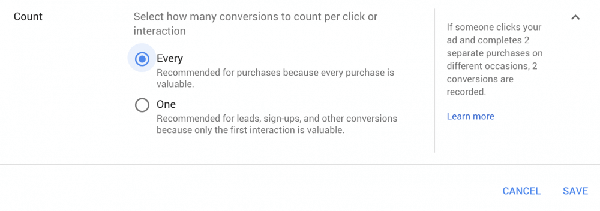E-Commerce PPC: Reduced Cost Per Lead By 85%
In this PPC case study, we’ll go over how we took an existing campaign, brought the lead price by over 85%, saved them thousands in ad spend, and 6x’d the number of their month-to-month leads.
Do you want to understand exactly how we did it?
In this case study, we’ll break down the strategies that helped us transform this campaign AND show you exactly how to use these methods with your Google Ads PPC Campaigns!
Background
This client offers high-end specialty home products, starting at ~$5k+, so this is a lucrative market.
The website is built as a sort of an e-commerce shop, with multiple products represented. Due to the fact that this is such a high-end market, many people do not just buy online. They always consult with somebody to match them up with the perfect item.
They came to us for some assistance in decreasing their lead cost, as well as providing them a greater quantity of leads while preserving lead quality.
The Audit – Huge Opportunities Uncovered
Google Ads is kind of like a land mine.
By far, it is one of the most effective advertising platforms in the world; it is also one of the most complicated.
There is no question – Google’s # 1 goal is to get as much money from you as possible, apparently without any motivation for you getting ROI.
… But that’s where we come in.
As always, we begin with an audit of the account.
We’re trying to find:
-
- Current data to get insights from (what’s working, what’s not).
- Mistakes in the account or configuration that bring poor conversions.
100% of the time, without exaggeration, we find opportunities that can be boosted.
To set the standard, here’s how the account appeared when it was handed over to us before any type of work was done:

Instantly, we notice that the conversion price is only 0.34%, which is rather low. Also, the price per conversion is high for what’s anticipated.
Here are a few points we did right away to get this campaign reactivated:
Know Exactly Where Every Penny Is Going With Proper Tracking
Tracking and data are the backbones of a properly setup campaign.
Without these, you can not figure out what campaigns are actually working, so you’ll never anything concrete to guide decisions about what to keep, reduce, or scale!
The challenge is that unless you’re an expert, it’s very easy to set this up improperly (or otherwise establish it up whatsoever!).
In this account, we discovered conversions like “All Page Views” and various other setups like “Count Every Conversion” were set up and were pointing to a lot of false information over the years.
As an example, with the “Count Every Conversion” setting, if you click an ad once and opt-in three times, it’s counted as three leads when actually we just have one lead. This is okay for purchase conversion projects; it’s not great for lead gen.

You see? There are landmines similar to this all over the place.
How we fix it:
We set up completely new triggers and tags within Google Tag Manager, which sent the data to Google Analytics and Google Ads.
We use Google Tag Manager in all of the accounts we work with to ensure that all information is going to one place and then being sorted properly.
It is incredibly easy to trace if there are any kind of issues. We just need to put one tracking code, Google Tag Manager, onto our web pages.
Raising CTR With Streamlined Advertisement Groups & Ad Copy
In Google ads, there are “ad groups,” which include a set of keywords on which you are bidding, and the ad copy that will be shown when people use those keywords in their searches.
When users look for a specific keyword, they’re searching for something extremely specific and want a solution.
However, when a generic ad appears, it will not always be an exact match for what they’re searching for, and that can increase your costs since your CTR (click-through rate) is not high enough.
In this account, we discovered that many of the ad groups were using the same generic ad.
This is a great opportunity because one ad cannot show the differences in each product, emphasize the benefits, or characteristics of the specific product.
What we did to we fixed it:
We developed fresh ads with headlines and descriptions that consisted of the precise seed keyword in each of them.
This is one of the most critical steps to a high converting campaign because of how valuable the user experience is.
You don’t want a person searching for “oil changes near me” and an advertisement for “brake repair” coming up.
It is completely irrelevant and will not produce a lot of quality traffic.
Making this change not only raised the advertisement relevance score but also made the user experience seamless for what they’re searching for.
From these significant optimization activities and our daily management, these are the outcomes we saw by the end of June 2019.

With just these few strategies, you can see that the price per conversion dropped over 40% from the start.
But we’re not done yet.
Increasing Conversions With Landing Pages
Running profitable campaigns takes a multi-faceted strategy. It’s usually not just what is set up in the account, however also what happens after the ad click.
A typical challenge that we see is that people typically are driving web traffic to their internet site, but that site isn’t as optimized as it can be for the conversion they desire.
When you have a lead gen project going to your normal site, it’s often packed by all sorts of distractions such as navigation, content, and, most importantly, it isn’t clear what you want them to do next.
You see, when a visitor comes to a web page, you need to make it very obvious what you want them to do, and remove all the other distractions.
That’s where landing pages come in.
A landing page is a page made especially to get conversions after an ad is clicked …
… and it can make a substantial difference in just how a campaign performs!
A landing page has a primary CTA (Call To Action), the web page copy is written around the customer avatar and the exact keywords you’re bidding on. Also, there are no links to other destinations.
In this instance, this account was sending out traffic directly to their home page, but there was a lot of room for conversion rate optimization.
We want people to take immediate action and that is what a landing web page is built to do.
Exactly how We Fixed It
To kick this project up a couple of more notches, we needed a dedicated landing page.
So we started with one of our trademark landing pages that inspire website traffic to opt-in to see their existing inventory and prices.
We started with a simple and to the point headline, a carefully crafted benefits area, and an obvious Call-To-Action, all in a well designed, gorgeous landing page.
The outcomes?

Conclusion
By setting up proper tracking, optimizing the campaign with our specific process, and implementing out a concentrated landing page, we dropped their CPL (Cost Per Lead) by over 85%!
If we produced the exact same number of leads we did in July for the same price as was spent in April, we would have spent $12,896, instead of the $1,820 that we invested.
The great thing is we’re still not finished.
Because we do daily management and continual optimization, we have a wealth of strategies to apply to take this campaign further as we get more data.
In addition, as long as the client can manage the quantity, we can scale it to the moon – all while maintaining a healthy CPL and also lead quality.

